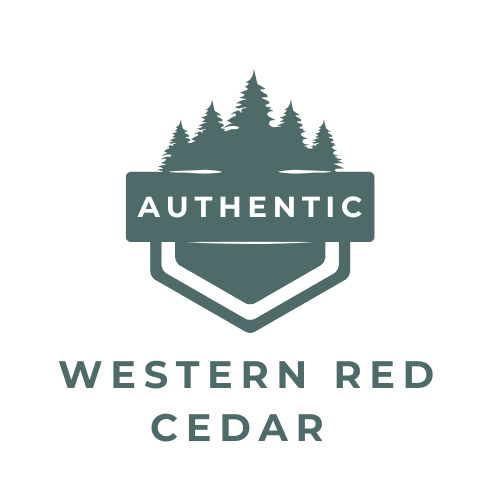
So you have decided to apply stain to your new Western Red Cedar Pergola or Gazebo. Western Red Cedar has a reputation for holding finish exceptionally well, and for good reason too. After all, Western Red Cedar is pitch and resin-free, which means there’s nothing to interfere with the bonding of your finish. Here are a few tips to help your pergola stay beautiful for many years to come.
Before you build your pergola or gazebo
Decide first if you have the building skills required to design and construct your own pergola or gazebo. Whether the answer is yes or no, don’t forget to consider the cost of applying a quality finish.
The best time to stain western red cedar is before installation. Not only does this allow you to work in a safe, comfortable position it has the added benefit of allowing you to apply a finish to all six sides of your wood before installing them, thus ‘protecting’ every surface of you pergola.
Store it in a dry place, off the ground. Only use use top quality Western Red Cedar that has been dried to approximately 15% moisture content. This is the optimal level of moisture to accept your finish. If left unfinished and exposed to the elements (even for just a few weeks), Cedar’s ability to hold your stain stains will be compromised, so don’t delay, and keep it out of the elements!
Stain choices for your cedar pergola or gazebo
Walk into any home do-it-yourself paint and supply store and you are bound to be inundated with finish-stains. These products provide protection and also dress up the wood’s surface, enhancing cedar’s natural colours and textures or changing its face altogether. Three common choices are solid-colour stains, semi-transparent stains, and transparent stains.
Solid-colour stains act as a barrier between the elements and the wood, forming a film around the wood. Semi-transparent stains are ideal when you want to maintain western red cedar’s natural finish without weathering. Semi-transparent stains penetrate the wood’s pores, to varying degrees based on product. Transparent stains enhance the wood’s colour and act as an invisible protectant.
We have experimented with many name brands, and in our opinion, a couple have stood out: Cabot Stain and Sikken’s.
Both of these companies offer an opaque stain as well if your desire is to ‘colour’ your pergola.
Don’t forget to test the stain!
Before you start applying your stain to the entire pergola, test your stain choice to make sure it has the desired effect. The post skirts supplied with your pergola are a great opportunity to do this. Test various stains and colours on the inside of the post skirts. These won’t be seen when the assembly is complete, and will help you decide on your stain choice a lot more definitively than some arbitrary ‘colour guide’ on a sample rack.
Brush or rag for applying stain?
I will confess to have a bias here…. both! While it is easier to apply stain with a rag over large, smooth surfaces, only the brush will work effectively on the end grains: cut ends and notches. So use both. Using a brush will give you the most control. Brush application (natural bristle) is the preferred method because it works the stain into the wood fibres and cells more effectively. To avoid lap marks, make sure that the leading edge is kept wet and that the wet stain is brushed into the wood. A very good method is to brush the stain over an area, and then follow up with a rag to catch any puddles or drips. Any stain left to sit on a surface will soak in more than surrounding areas and appear darker. So brush, and… rag off. Work in small manageable areas. Try this technique: brush with one hand, and keep the rag in the other. Brush an area with the stain, and follow up with the rag. It won’t take long until you have developed a rhythm and the job will be done in no time.
While stain brands recommend a drying time of 12 to 24 hours, allowing the cedar to dry between 24 and 48 hours ensures that it is completely dry before you handle it for assembly.
There’s always the low-maintenance option of letting your western red cedar outdoor projects weather to a beautiful silver grey. But if that doesn’t suit your personal palette, follow these tips for a beautiful finish that will last for many years!
Enjoy your Pergola!
 Working with your hands can be intensely satisfying. Most hardcore DIYers love to rework their backyard as it acts as a showcase of their skills. However, renovating your backyard is not a small job. It requires planning, design, plumbing, gardening, and so on. If you are an avid DIYer, you already know this but take a good look around your backyard.
You might have started the project but do you see something wrong? Do you see several projects left in different stages of completion? Are you finding that you lose interest in your DIY projects midway? Doing maintenance or DIY projects on your backyard can be a prudent way to save money. However, to be an effective backyard DIYer, you have to be smart and resourceful or you will end up wasting your time and possibly have an eyesore to look at until you fix the unfinished idea.
Here is what you can do to be an effective backyard DIYer
Step #1 – Evaluate Your Space
Before you even move a stone in your backyard, you have to assess the amount of space available for different uses. For example, your child may want a part of the backyard as a play area, while your spouse may want his barbeque and outdoor workout spot, and you may be yearning for a small lounge and fire pit to relax with friends and family. As a result, start your backyard remodelling by measuring the space available for this endeavor.
Working with your hands can be intensely satisfying. Most hardcore DIYers love to rework their backyard as it acts as a showcase of their skills. However, renovating your backyard is not a small job. It requires planning, design, plumbing, gardening, and so on. If you are an avid DIYer, you already know this but take a good look around your backyard.
You might have started the project but do you see something wrong? Do you see several projects left in different stages of completion? Are you finding that you lose interest in your DIY projects midway? Doing maintenance or DIY projects on your backyard can be a prudent way to save money. However, to be an effective backyard DIYer, you have to be smart and resourceful or you will end up wasting your time and possibly have an eyesore to look at until you fix the unfinished idea.
Here is what you can do to be an effective backyard DIYer
Step #1 – Evaluate Your Space
Before you even move a stone in your backyard, you have to assess the amount of space available for different uses. For example, your child may want a part of the backyard as a play area, while your spouse may want his barbeque and outdoor workout spot, and you may be yearning for a small lounge and fire pit to relax with friends and family. As a result, start your backyard remodelling by measuring the space available for this endeavor.


 Thinking of doing a DIY outdoor structure and not sure if you have the correct tools? According to Walt Kowalski (Clint Eastwood’s character) in the movie Gran Torino, you can do half of your household chores with just three things: WD-40, a vise grip (adjustable pliers), and a roll of duct tape. This may be true but when thinking of assembling your own
Thinking of doing a DIY outdoor structure and not sure if you have the correct tools? According to Walt Kowalski (Clint Eastwood’s character) in the movie Gran Torino, you can do half of your household chores with just three things: WD-40, a vise grip (adjustable pliers), and a roll of duct tape. This may be true but when thinking of assembling your own Redefining and making your backyard look exotic yourself is a marvellous way to add a personal touch to any space. Whether it’s a chic, fantastic, or sparkling outdoor area you want to entertain guests in, or a rustic haven you would like to retreat to when you want to get away from it all, a
Redefining and making your backyard look exotic yourself is a marvellous way to add a personal touch to any space. Whether it’s a chic, fantastic, or sparkling outdoor area you want to entertain guests in, or a rustic haven you would like to retreat to when you want to get away from it all, a  Investing in a gazebo may seem a little expensive,. You can only use it in the summers and the rest of the year, it just sits there with no one using it. This does seem like a waste of money but you couldn’t be more wrong.
Investing in a gazebo may seem a little expensive,. You can only use it in the summers and the rest of the year, it just sits there with no one using it. This does seem like a waste of money but you couldn’t be more wrong.  You have a large independent home and an even larger backyard. One of the advantages of having a home like this is that you can customize it anyway you want. Before you start complaining about expenditure, you should know that you can personalize your home in a day with a few simple DIY projects. You don’t have to be an expert craftsmen to do these few projects that we’ve listed. So go ahead, here are 10 of the best and simplest DIY backyard projects that you can try out.
DIY Project#1 – Fire Pits
What’s an outdoor space without a barbeque? With a bag of cement, about fifty bricks and a metal fire pit, your outdoor barbeque/ fire pit is ready to go. There are
You have a large independent home and an even larger backyard. One of the advantages of having a home like this is that you can customize it anyway you want. Before you start complaining about expenditure, you should know that you can personalize your home in a day with a few simple DIY projects. You don’t have to be an expert craftsmen to do these few projects that we’ve listed. So go ahead, here are 10 of the best and simplest DIY backyard projects that you can try out.
DIY Project#1 – Fire Pits
What’s an outdoor space without a barbeque? With a bag of cement, about fifty bricks and a metal fire pit, your outdoor barbeque/ fire pit is ready to go. There are  Having your own
Having your own 
 A
A




